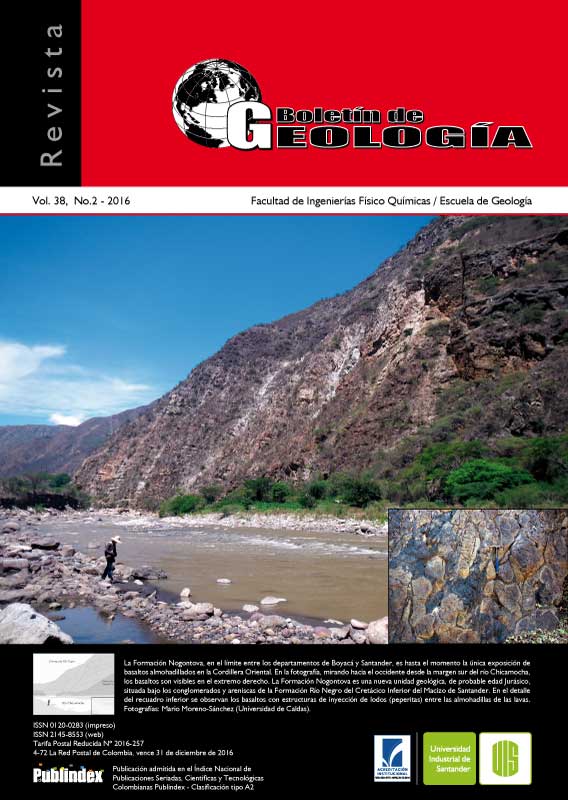Articles
PHYSICAL ANALYSIS OF THE SPATIAL DISTRIBUTION OF HUMMOCKS FROM THE DEBRIS AVALANCHE LOCATED IN THE AREA OF NEREIDAS, WEST FLANK OF NEVADO DEL RUIZ VOLCANO
Published 2016-03-31
Keywords
- debris avalanche,
- volcanic ediffice collapse,
- hummocks,
- transport direction,
- mobility
- friction ...More
How to Cite
Velásquez-Rocha, L. V., & Sánchez-Aguilar, J. J. (2016). PHYSICAL ANALYSIS OF THE SPATIAL DISTRIBUTION OF HUMMOCKS FROM THE DEBRIS AVALANCHE LOCATED IN THE AREA OF NEREIDAS, WEST FLANK OF NEVADO DEL RUIZ VOLCANO. Boletín De Geología, 38(2). https://doi.org/10.18273/revbol.v38n2-2016006
Altmetrics
Abstract
Debris avalanches represent great hazard for communities neighboring volcanoes. Rapid modification of landforms during these processes makes it difficult understanding the dynamics of the slides, estimating their magnitudes and assesing their damage. The analysis of preserved hummocks along the path of avalanches, however, becomes a tool to interpret the physical characteristics of debris avalanches. In this work a group of 281 hummocks emplaced west of Nevado del Ruiz Volcano, in the Nereidas area, is studied. Both, the spatial distribution and dimensions of the emplacement are calculated using GPS-determined positions of individual hummocks as well as orthoimages and high-resolution topography. A negative correlation is found between the base area of hummocks and their distances to two probable sources. The most likely source area for the avalanche and a NW general direction of transport with some topography controls were also determined. The mobility of the avalanche (L/H) and its reciprocal the friction coefficient ( H/L) were determined as 6.8 and 0.15, respectively. Analysis of the information and the results lead to the conclusion that the deposit corresponds to a minor debris avalanche younger than 40000 years, during which materials collapsed from a height of 2.6 km and reached a horizontal distance of 17.8 km (6.8 times greater than the collapse height), covering a total area of 47.7 km 2 and transporting an estimated total volume equal to 5.05x10-3 km3, which is considered an underestimate.Downloads
Download data is not yet available.
